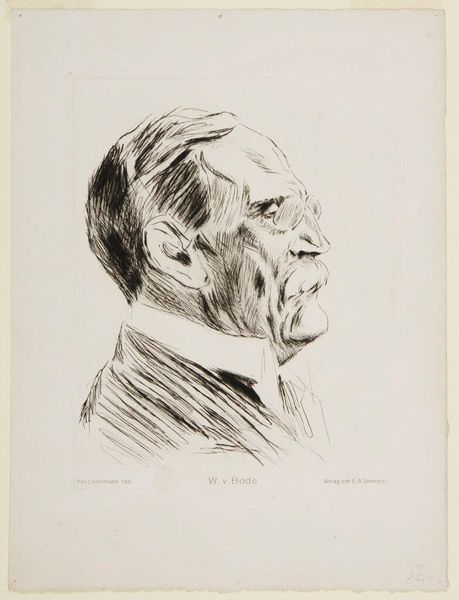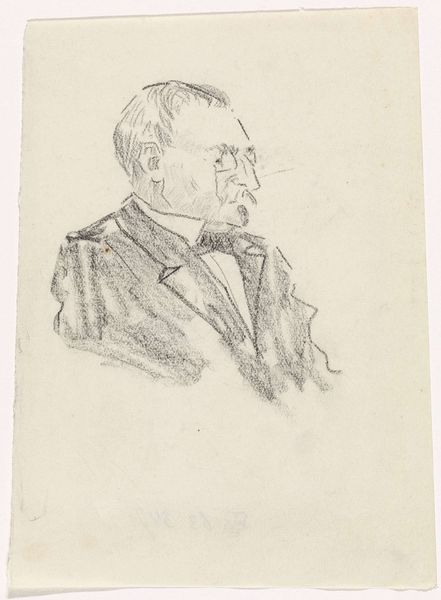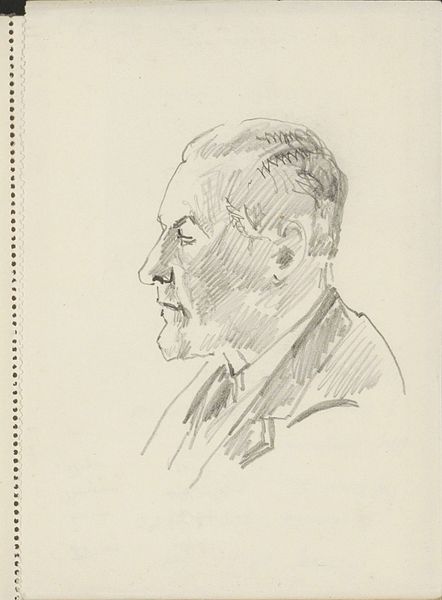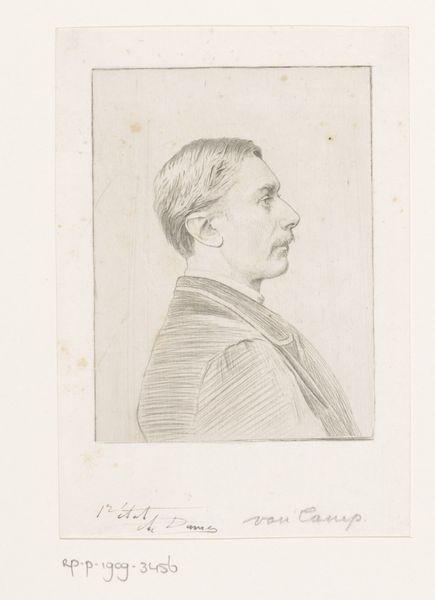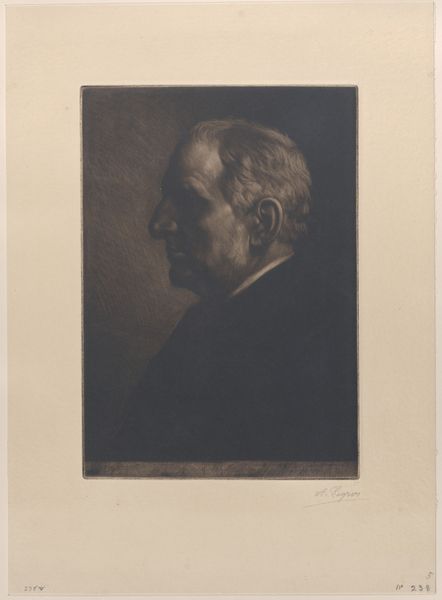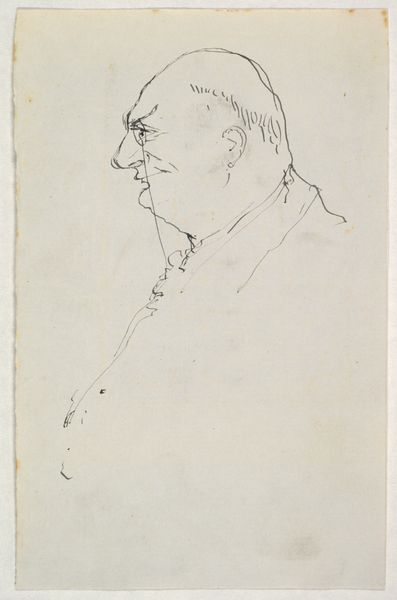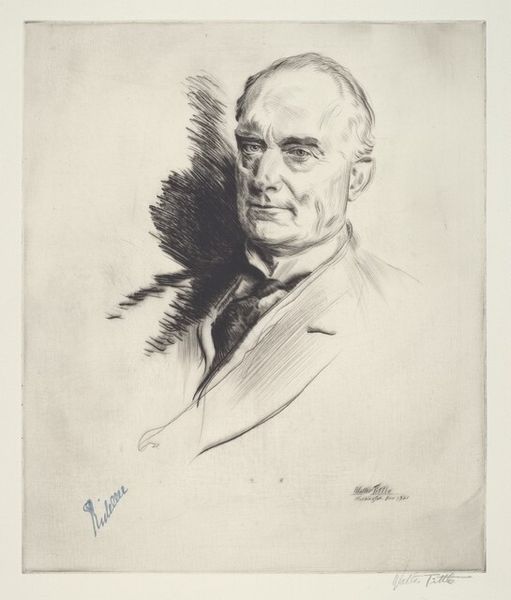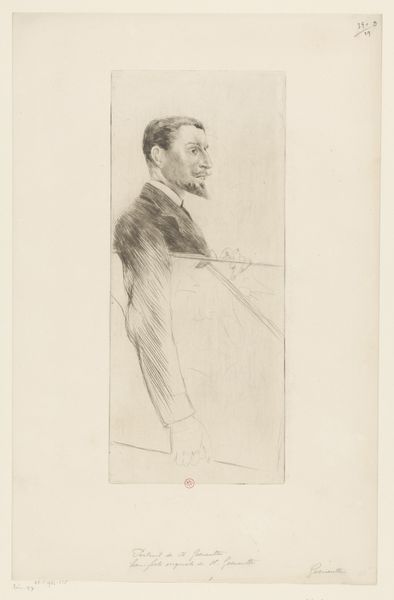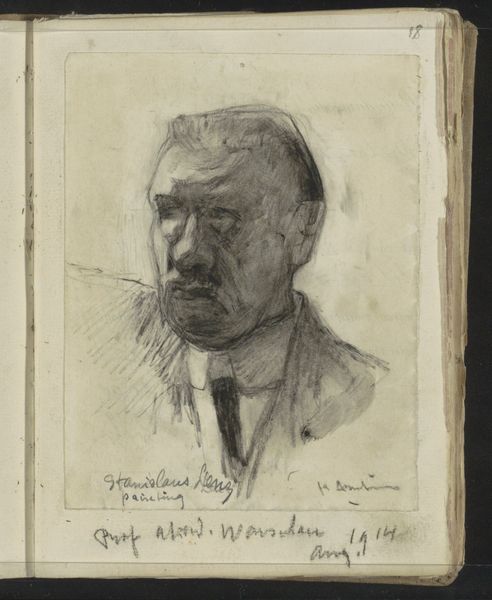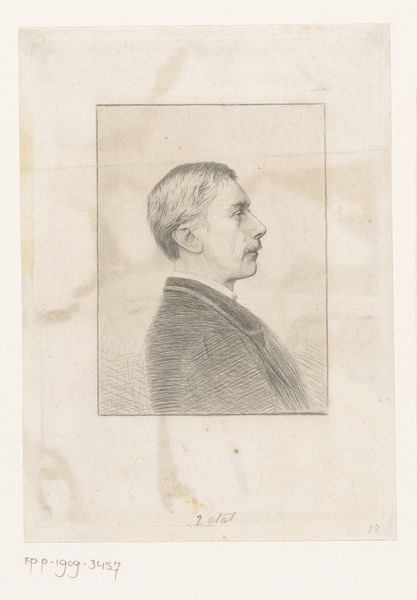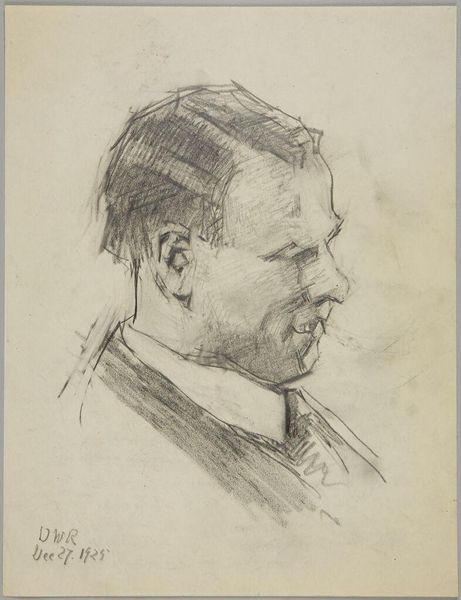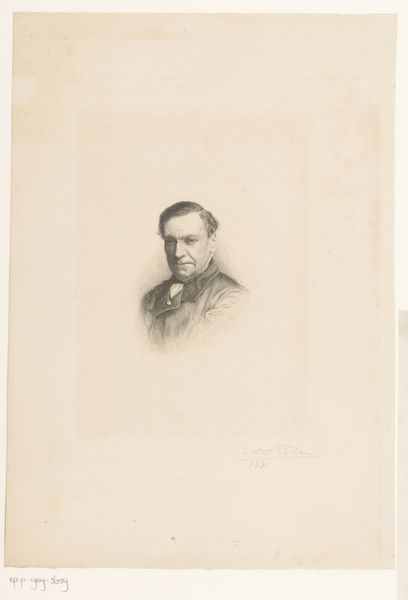
drawing, ink
#
portrait
#
drawing
#
german-expressionism
#
ink
#
pencil drawing
#
portrait drawing
#
realism
Dimensions: height 240 mm, width 188 mm
Copyright: Rijks Museum: Open Domain
Editor: This is Max Liebermann's "Portrait of Wilhelm von Bode," possibly from sometime between 1857 and 1935. It’s an ink drawing. What strikes me is the direct gaze and sharp lines; there's a real intensity in the portrait. What do you see in this piece? Curator: The institutional history surrounding this portrait is fascinating. Wilhelm von Bode was himself a powerful museum director in Berlin. Liebermann's portrait, rendered with such stark realism, acts as both a representation of an individual and a comment on the cultural authority Bode wielded. How might this portrait function within the context of Berlin's burgeoning museum culture at the time? Editor: That’s a good point. The weight of responsibility seems etched onto his face. The glasses also stand out – almost like lenses through which he surveys the art world. Do you think the style of drawing reflects a particular socio-political moment in Germany? Curator: Absolutely. German Expressionism was emerging. Note the stark lines, almost aggressive in their simplicity, diverging from traditional portraiture. The visual language mirrors the broader anxieties and social critiques present in Germany at the time. It's also crucial to consider Liebermann’s own position as a Jewish artist within a society experiencing rising antisemitism. Editor: So the portrait becomes more than just a likeness, but a document reflecting those societal pressures? Curator: Precisely! Consider the politics of imagery. Liebermann, in portraying a figure of the establishment, is also subtly questioning and observing the structures of power. The drawing exists in a web of social relations – between artist, sitter, institution, and audience. It is a dialogue rather than just a document. Editor: That changes how I see the portrait. It’s less about the man, and more about the power he represented and the world he inhabited. Curator: And about Liebermann himself navigating that world. That intersection is where the work really comes alive. Editor: Thank you. This gives me a completely new way of understanding it.
Comments
No comments
Be the first to comment and join the conversation on the ultimate creative platform.
